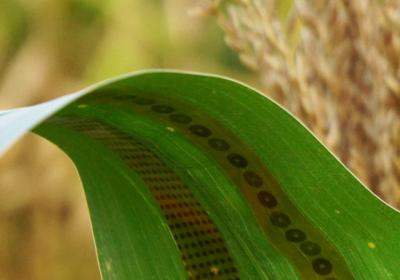Iowa State University researchers have created a new, low-cost, easily produced, graphene-based sensors-on-tape that can be attached to plants to provide data that was previously very hard to collect. This can help farmers to breed plants that are more efficient in using water, for example, but also open new possibilities for creating new sensors for biomedical diagnostics, for checking the structural integrity of buildings, monitoring the environment and, after appropriate modifications, for testing crops for diseases or pesticides.

The tiny graphene sensors that can be taped to plants, and the researchers have dubbed it a plant tattoo sensor. The plant sensors have been successfully tested in lab and pilot field experiments. The graphene-on-tape technology in this study has also been used to produce wearable strain and pressure sensors, including sensors built into a smart glove that measures hand movements.
The process can produce precise patterns as small as 5 millionths of a meter wide just a twentieth of the diameter of the average human hair. The researchers explained that making the patterns so small increases the sensitivity of the sensors. This fabrication process is very simple, they said. You just use tape to manufacture these sensors. The cost is just cents.
In the case of plant studies, the sensors are made with graphene oxide, a material very sensitive to water vapor. The presence of water vapor changes the conductivity of the material, and that can be quantified to accurately measure transpiration (the release of water vapor) from a leaf.
The Iowa State University Research Foundation has applied for a patent on the sensor technology. The research foundation has also granted an option to commercialize the technology to EnGeniousAg an Ames startup company co-founded by scientists involved in this study.
The most exciting application of the tape-based sensors we’ve tested so far is the plant sensor, the Iowa team said. The concept of wearable electronic sensors for plants is brand new. And the plant sensors are so tiny they can detect transpiration from plants, but they won’t affect plant growth or crop production.

